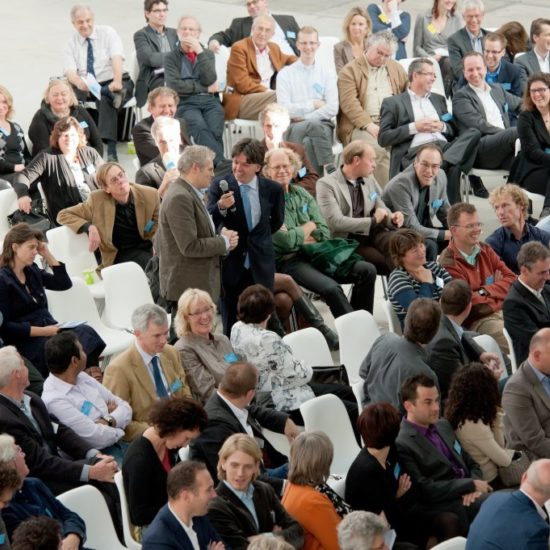There are some truely amazing tools out there, that can make any meeting (online as well as on stage) better. Just to name a few that we love: Slido, PresentersWall, ConsensIQ, Piccles, Twine ... and so on.
When used well, they are worth the investment. When used badly, they are a waste of money. These are the rules we moderators live by, when applying engagement tools:
It's not a gimmick!
Too often, these tools are used for the sake of using them. In that case, you'll just annoy your participants, instead of engaging them. And it's an insult to the developpers of the tool. So make sure you make a deliberate choice for a specific solution and then use it wisely.
Make it human
In many cases, we see participants locked up in their screen all day long. If you use engagement tools, please combine them with human2human interaction.
It's easy to imagine: if you have your participants communicate through their devices all meeting long, this will become the standard for that event. When going to lunch or in breakout groups, this code will hamper conversation. Everyone will be more inclined to dive into email or social media, since you told them subconsiously that this is the normal for this meeting.
Make a choice
Each tool has its strong points and its limitations. Some are perfect for bringing energy, others for sharing info & insights, for getting to know each other, for making choices or for dialogue.
Our own tool ConsensIQ for instance, is designed for deeper dialogue. So please use it, when you want participants to really share ideas, debate, listen and take joint decisions. If you just need quick polls to 'take the temperature of the bath water' (as we say in Holland), turn to Slido or Mentimeter.
One tool is not better than the other. They're just different, designed to meet different needs. So, inform yourself and choose for the occasion.
Use for context
Too many times, the tools have no relation to the rest of the program. This doesn't help neither the tool, nor the event.
If you want to use a networking tool, please make sure it has a direct relation to the previous element in the scedule and to the next point on the agenda.
When you throw in polling questions, don't just vote and move on. Don't ask a question, without knowing where it's coming from. Don't ask people to answer, without knowing where the outcomes will take you.
Make them talk
People communicate best, when they have a dialogue. The tech is just a tool!
So have participants discuss amongst themselves first, before you have them vote. Or do a wordcloud or heatmap first, to get them talking about the outcome.
Combining the human connection and the tools will drive the results of your meeting.
Analogue and digital need each other
Sure, tech is powerful. It will give you a full overview of opinions in seconds, it will make all participants connect as a group, it'll provide big data and it will make sure everyone (even the introverts) get a say.
Yet, analogue workformats have powers too: they bring energy, make you connect to individuals, will bring everyone new insights and give a sense of belonging. So why not combine body voting and digital polling? Why not sometimes choose the quick raise of hands over the tool; and the other way around?
In conclusion
Using engagement tools to the max, is about design and making deliberate choices. Tools are their to help us, not to take over everything.
Break these rules and you'll make us mad. Keep them in mind, use them wisely and we'll be smiling.
Jan-Jaap In der Maur


